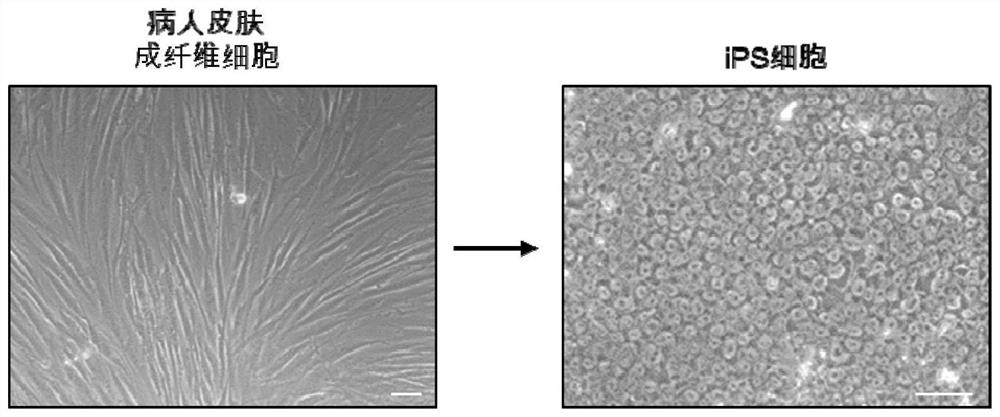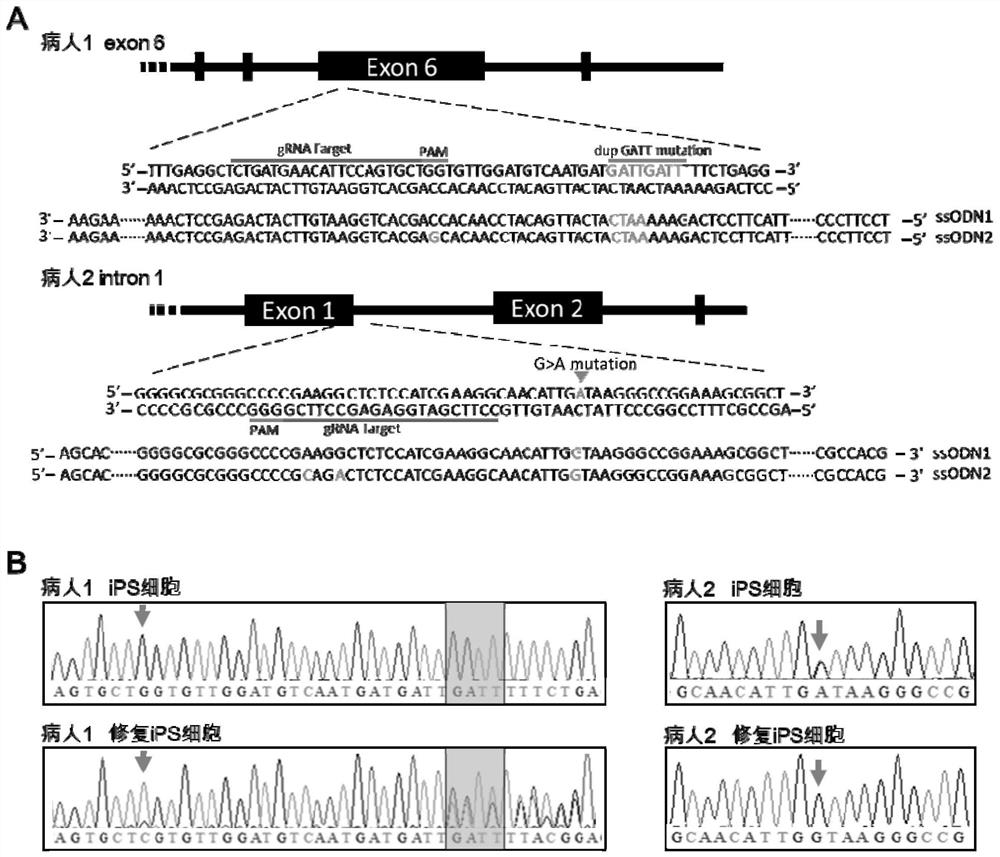Liver organoid model, establishment method and application thereof, and pharmaceutical composition for treating hepatocyte ferroptosis
A technology for establishing methods and organoids, which can be applied in the field of medicine and can solve the problems of unclear pathogenesis and complex conditions.
- Summary
- Abstract
- Description
- Claims
- Application Information
AI Technical Summary
Problems solved by technology
Method used
Image
Examples
Embodiment 1
[0084] Example 1 iPS cell induction
[0085] Fibroblasts from patients with mitochondrial DNA deletion syndrome were induced into iPS cells as follows:
[0086] The induction of iPS cells from patients with DGUOK mutations includes virus packaging, virus infection, cell division and picking clones. The experimental steps are as follows:
[0087] 1. Virus packaging: 293T cells according to 400×10 4 Inoculate at a cell density of 1 cell / 10cm dish. When the density of 293T cells is about 80%, it is the optimal transfection density. Use calcium phosphate transfection method to transfect pMXs-hOCT4, pMXs-hSOX2, pMXs-hKLF4, pMXs-hc -MYC four plasmids (purchased from addgene, plasmid numbers are #17964, #17218, #17219, #17220), placed in 5% CO 2 , 37 ℃ incubator overnight. The next morning, replace with 9 mL of fresh 293T medium. The culture medium of 293T cells containing the virus was collected, filtered through a 0.45 μm filter membrane, polybrene (final concentration 8 μg / mL)...
Embodiment 2
[0093] Example 2 Repair of patient iPS cells by CRISPR / cas9 technology
[0094] The iPS cells of two patients were repaired by CRISPR / cas9 technology, and the iPS cells repaired at the DGUOK mutation site were obtained. image 3 A shows the design process of CRISPR / cas9 gene repair technology on iPS samples from these two patients.
[0095] The specific steps of CRISPR / cas9 gene repair technology are as follows:
[0096] 1. Design of CRISPR / cas9 cleavage target site
[0097] Use the CRISPR design website (http: / / / crispr.mit.edu / ) to design the CRISPR / cas9 cleavage target site. According to the score of the website, select the Guide sequence with a higher score. After selecting the sgRNA, you need to add the enzyme cutting site, and design the reverse complementary pairing strand of sgRNA. Send the DNA sequences corresponding to the designed 2 pairs of sgRNAs to the company for synthesis.
[0098] The DNA sequence corresponding to sgRNA1 of patient 1: 5'-CACCGTCTGATGAACATTC...
Embodiment 32D
[0117] Example 32D Hepatoid Cell Differentiation
[0118] The steps to differentiate iPS cells into 2D hepatic-like cells are as follows:
[0119] In vitro liver differentiation adopts a serum-free differentiation protocol, and undergoes four stages of differentiation for 21 days. The method is as follows:
[0120] 1) Coat the culture plate with fresh Matrigel one day before passaging, and incubate overnight at 37°C. When the patient's iPS cells obtained in Example 1 grew to 80% density, Accutase was used for passage, and Y-27632 was added during passage.
[0121] 2) The iPS cells grow to 90% on the second day of subculture, do not exceed 24h, and start the liver replacement differentiation medium (medium formulation reference S.Li, J.Guo, Z.Ying, S.Chen, L.Yang, K .Chen, Q.Long, D.Qin, D.Pei and X.Liu, Hepatology.2015,61,5) for liver differentiation, divided into 4 stages, a total of 21 days, including: directed endoderm differentiation, prehepatic Somatic cell differentia...
PUM
 Login to View More
Login to View More Abstract
Description
Claims
Application Information
 Login to View More
Login to View More - R&D Engineer
- R&D Manager
- IP Professional
- Industry Leading Data Capabilities
- Powerful AI technology
- Patent DNA Extraction
Browse by: Latest US Patents, China's latest patents, Technical Efficacy Thesaurus, Application Domain, Technology Topic, Popular Technical Reports.
© 2024 PatSnap. All rights reserved.Legal|Privacy policy|Modern Slavery Act Transparency Statement|Sitemap|About US| Contact US: help@patsnap.com










